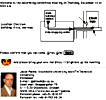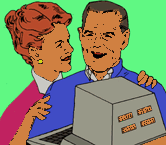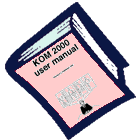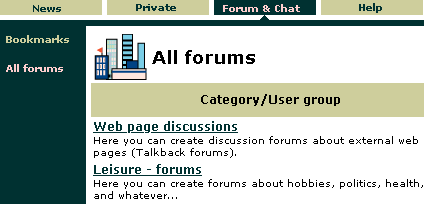
|
||
 |
KOM 2000 is a simple, light-weight, and efficient groupware product providing different-time communication (forums) and same-time communication (chat). This document describes the status of development of KOM 2000 version 3 in February 2000. |
|
 |
The software: FunctionsThe KOM 2000 software provides the following functions: Non-simultaneous forums (computer conferencing), |
|
 |
Forums: Different-time groups
for information exchange. Members can send contributions, which are
immediately made available to other members. The same kind of functionality
that is provided by First Class, Lotus Notes, Web4Groups and by many
BBSes.
|
|
|
|
Open forums: Anyone interested can become amember. Chats: A special kind of forum with special functions for same-time textual communication. What is written in a chat is saved in the same way as forum contributions, so that people can access the information at a later time. Moderated forums: All contributions are approved by a moderator before sent to the members Guestbook: Forum where people can contribute without first logging in. |
Closed forums:
Membership is controlled or restricted.
Courses: Forums with special support for distance education. Teachers can monitor and grade student's contributions. Teachers can see an overview of a student's results as a basis for final gradings. Teachers and students can see overviews of their grade status. Restricted forums: Open to specified groups, closed to other people. A private area for personal information, personal messages and e-mail. |
|
|
Contributions in plain text format and in World Wide Web (HTML) format including (not yet in KOM version 3) in-line images, attachments in many formats, also proprietary formats. Inquires and trial votes: Sending a question and collecting and counting the replies, using more flexible methods than just "yes/no". |
|
| Multi-language forums: Contributions can be provided in and translated to more than one language (was available in KOM version 2, but is not yet ready in KOM version 3). | ||
 |
E-mail sending and receipt of Internet e-mail including html-formatted messages, in-line graphics and file attachments. (Sending of graphics and attachments was available in KOM version 2, but is not yet ready in KOM version 3). Incoming e-mail can be addressed to either users and forums. An e-mail address can be a member of a forum, and will then get all new contributions in this forum. E-mail notifications: Regular messages, once a day or once a week, which lists new messages in KOM 2000 for this user since the previous notification. The user need only click on the URL of a forum or message to enter KOM 2000 and read it. Usenet News interface is under development. |
|
 |
Each forum has a description, a list of members and a list of contributions. It is possible to see how far each member of a forum has read in the forum. Each forum, thread and message has its own URL, so that bookmarks or links can refer directly to a particular forum, thread or message. Inquires and trial votes: Sending a question and collecting and counting the replies, using more flexible methods than just "yes/no". Contributions in plain text format and in World Wide Web (HTML) format including (not yet in KOM version 3) in-line images, attachments in many formats, also proprietary formats. |
|
 |
An overview page shows each user what is new to this particular user - personal messages, forums with news, new forums. Users can also. search for and retrieve old contributions. Contributions are read one forum at a time, and within a forum, one thread at a time. There is a simple tool for rapidly scanning through all new contributions in a forum. |
|
The software: User interface
A KOM 2000 user uses an ordinary web browser (like Netscape Navigator or Internet Explorer) to participate. It is also possible to participate through e-mail. To an e-mail user, KOM 2000 looks like a mailing list server. The user interface has been carefully designed through many interactions of prototype building and user testing with non-computer experts, to make it simple and easy to overview for everyone. |
||
 |
SeniorOnlineIn the SeniorOnline EU-funded project, KOM 2000 is used and added functionality is developed: A general directory system and subject tree for forums, users and web pages. SelectIn the Select EU-funded project, we are adding filtering and rating functionality to KOM 2000. |
|
 |
The software: ArchitectureKOM can be distributed on many local servers. Each user subscribes to one local server, but can participate in forums from any other server. Replication of forums is automatic to all servers where there is a member of the forum (was available in KOM version 2, not yet ready in KOM version 3). KOM is based on Java servlets running under a web server supporting such servlets. This makes it easy to add new functionality. KOM requires a unix server with a servlet-supporting HTTP server like Apache. Many KOM servers can co-exist on one unix server. Porting to Linux is planned. |
|
 |
More informationUser manuals are available for download. Demo servers are available for immediate testing. |
|
 |
HistoryKOM 2000 is developed by the CMC research group in the K2LAB research laboratory of the Department of computer and systems sciences, Stockholm University and KTH Technical University, and is based on earlier software such as KOM, SuperKOM and Web4Groups-1. |
|
| This document is available at http://cmc.dsv.su.se/kom/kom-summary.html and was first published in September 1998 by Jacob Palme. | ||

